Pro Tips for a More Complete HR Assessment

Ah, January. The time to resolve to eat better, read more, watch less TV, and finally pick up jogging/yoga/insert fitness craze here. It’s also the right time for HR professionals to take stock of the health of their department’s operations and resolve to make any needed adjustments for a smooth year ahead.
Employee Handbook
A great place to start is the employee handbook. When was the last time it was updated? If it hasn’t been updated in the last 18 months, it is likely out of compliance. The best practice is to review and update the handbook annually, including asking employees to review and acknowledge it each year to refamiliarize themselves with its standards.

The handbook is the first impression of your culture after a new hire enters your organization. It should welcome employees into the company while also showcasing the policies and protocols that make your company function. Your handbook will set expectations and creates an accountability culture.
Training Programs
How are your training programs? (Employee training, not weight training!) Are you checking all the compliance boxes but not going much further? You know that training is just as important as taking that weekly kickboxing class, but it can be overwhelming to get started, especially for a smaller organization. From leadership development to DE&I, there is a wide range of options, all of which must be tailored to your specific needs.
Employees want to know that you are just as invested in their careers as they are. Providing training opportunities to increase their skills and business acumen will not only increase their potential but will increase their engagement and likelihood of remaining a loyal employee. The cost to replace a lost employee is far greater than that of investing in the ones you have. Training employees is a practical business investment that will pay dividends for years to come.
Leadership Coaching
Leadership Coaching takes training to the next level, like having a one-on-one with a personal trainer. It kicks your current routine up a notch, gives you additional insight through personal relevance and action plans. Organizations often assume that once an employee is in a leadership position, they automatically know how to lead and provide strategic direction. Great leaders are made, not born. Excellent leaders never stop learning and know when to seek advice from experts.
Assessing the overall bench strength of your leadership team and embracing personalized coaching strategies to build on leadership’s existing strengths and move your organization forward. Leadership coaches help them build stronger teams through improved management skills, emotional intelligence, and interpersonal relationships.
Diversity, Equity & Inclusion
Build trust, loyalty, and engagement with equitable policies and inclusive programing that embrace the value of diversity in your organization. An internal DE&I initiative, survey of employees, and audit of policies for systemic gaps can lead to customized programing, measurable objectives, and refreshed ERG content that improves DE&I strategies.
Total Rewards
Stand out and showcase what makes your organization unique in your Total Rewards program. Differentiate your organization with the compensation, benefits, wellness, and recognition programs you offer that will attract and retain top talent. In this competitive job market, you want to highlight how your company culture is unique and why people should want to work for you.
Don’t be intimidated by the big muscles of large companies and what they appear to offer. Look in the mirror and find your attributes. It may your benefits package, time off or it may be the community and solidarity that your employees have built by being a part of your company. Once you know how you stand out, it is just as important to communicate these benefits effectively internally and externally.
Like New Year’s resolutions, when it comes to the health of your organization you must be intentionally strategic with your goals. Which direction do you take, and what takes priority? Just like a great personal trainer, it helps to have someone to guide you through all of aspects of HR, create a personalized plan and encourage you every step of the way.
Here’s how our HR assessment works:
- Begin with an overall full employee life cycle and HR assessment. This includes auditing your handbook for compliance, reviewing your training programs, and assessing your onboarding and offboarding processes as well as everything in between.
- Once complete, we’ll walk through our findings and create an action plan. We will help you map out and navigate the priorities—creating custom processes or programs specific to your culture.
- You will share with us your vision of what the company and culture looks like at the end of this wellness journey, and we will create the path to achieve the vision of your future.
Our goal is to help take the pressure off knowing where to start and/or which direction to take. Fahrenheit Advisors can provide you with the right level of HR programming to take you and your team to the next level.
We are happy to help you on your organizations journey. Reach out to learn more about how an HR assessment is the right first step to success in 2022.
About the Author
Jillian Zemp provides a broad range of expertise in recruiting, benefits and wellness, performance management and development. Utilizing her project management experience, she has an outstanding success record of implementing organization-wide programs. Jillian supports clients by providing fractional human resources expertise with a hands-on approach and strategic guidance.
EDITOR’S NOTE: Content and imagery provided by Fahrenheit Advisors. Fahrenheit Advisors is a Sponsor of Virginia Council of CEOs.
4 Ways to Overcome DE&I Challenges Within Organizations

Whether your organization needs to develop a Diversity, Equity, and Inclusion (DE&I) program, or improve the one it currently has in place, there will be some challenges. The Virginia Council of CEOs commissioned a survey to better understand the Diversity, Equity, and Inclusion (DE&I) efforts of its members. The findings gleaned from this survey were compiled into a report and provide an insightful look at the challenges CEOs face. The report is free, and can be found here on the Virginia Council of CEOs website.
An analysis of the survey responses from 56 top executives of small to mid-size organizations in Virginia shows that while nearly 90% of CEOs believe DE&I efforts are important, and a majority are engaged in some level of DE&I work, only 14% have a mature program in place.
So, what are the obstacles standing in the way? The report uncovers 4 main challenges. Let’s look at each of these challenges, and ways to overcome them:
#1) Getting Started with DE&I
Perhaps you’ve researched the topic, surveyed your team, and maybe even attended a management training workshop in DE&I. Where do you go from here? How do you jump start your DE&I efforts?
While it might be uncomfortable at times, changes can’t occur without action. It begins with commitment from the top: the support and involvement of leadership, including the CEO, executive team, and board of directors. Throughout the entire journey, it is critical to listen to your employees and seek their input along the way. What you learn will determine your business objectives, along with the changes that need to be made in order to meet these objectives.
#2) Focusing Attention & Investing Resources
You have deemed DE&I important and are committed making the journey. You may have planned some initiatives and have some objectives. What do you do now, and who is going to lead the initiative?
It is important to designate a leader (or leaders) for your DE&I efforts, and those leaders need the full support of senior leadership as committed champions. From here, you can begin to develop a clear mission, vision, and strategy for your DE&I initiatives, as well as make budgeting and staffing considerations.
This is a good time to review your current policies and procedures, and consider creating a DE&I council, discussion groups and/or ERGs within your organization. Incorporating awareness and DE&I training into your training and development programs, as well as recognizing positive DE&I behavior, can provide support and gain buy-in for your initiatives.
#3) Attracting & Hiring Diverse Candidates
The survey showed that most business leaders are focused on diverse hiring and want to build a workforce and leadership team that reflects the communities they serve and/or where they are located. If this is your focus, how do you attract a diverse pool of qualified candidates?
A good place to start is by evaluating your job descriptions, as well as your recruiting process and procedures, to see what might be missing. You will want to ensure everyone in your organization understands your diversity initiative, and why it is important.
Highlight your DE&I commitment on your website, and incorporate it into your applications, handbook, and onboarding materials, etc. Provide DE&I training and awareness (including unconscious bias training) for all those involved in the recruiting and hiring process.
If your recruiting team is small or lacks diversity, consider partnering with external organizations and groups that align with diverse communities, and post jobs on diverse job boards. Get creative and be intentional!
#4) Incorporating DE&I Organization-wide
CEOs realize they need to expand DE&I throughout their organizations and recognize the value of being intentional in these efforts. How do you engrain DE&I practices so that they become part of your organization’s culture? This effort involves integrating DE&I policy into your organizational strategic and/or operating plans.
All levels of management need to be actively engaged and ensure that DE&I is part of your organization’s communications plan. “Walk the talk” as a leader and demonstrate diversity, equity, and inclusion in your day-to-day life.
Ongoing DE&I training and development is key, as well as measuring and evaluating your efforts throughout the journey for continuous improvement. You may make mistakes along the way, but you will continue to evolve and grow as an organization!
Diversity can open the door for productivity and innovation. Equity ensures everyone is treated fairly and provided the same access and opportunities for development and advancement. Inclusion provides a sense of belonging and is where organizations can really see the benefits of workplace diversity. To be sustainable, DE&I efforts must adapt and evolve along with your workforce. It is an actionable journey, and it is important to be flexible and able to adjust along the way.
Does your organization need to address Diversity, Equity, and Inclusion? You don’t have to go it alone – we can help! Fahrenheit has advisors who have DE&I experience who can help identify your organization’s DE&I-related obstacles and help you overcome them. Want to learn more? Reach out to Experts@FahrenheitAdvisors.com today.
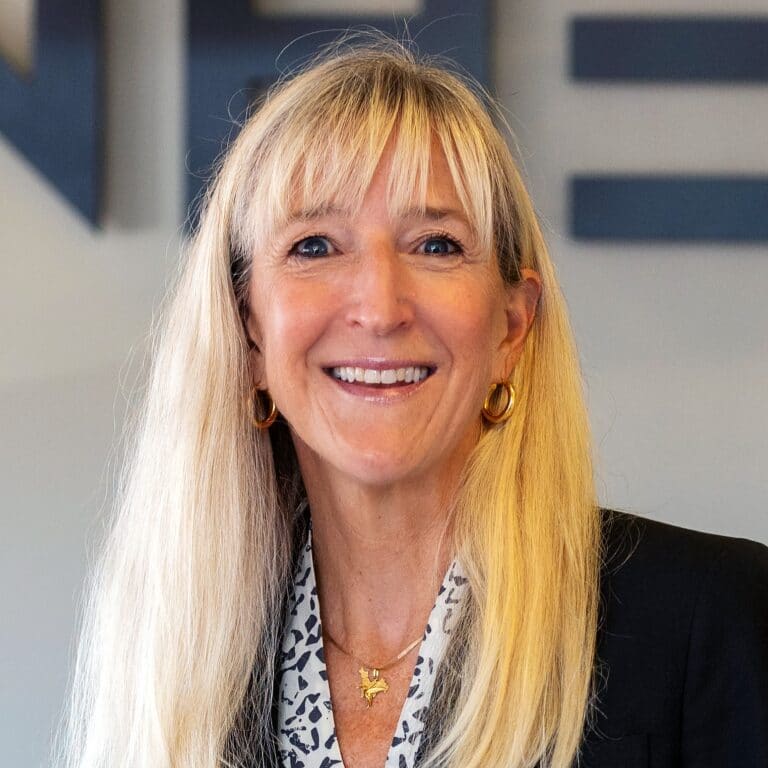
About the Author
With over 25 years of experience, Katherine Zampolin, Senior Consult at Fahrenheit Advisors, provides a broad range of experience in leadership development, coaching, corporate culture, and talent management. Through her authentic and practical approach, she partners with organizations to help them strengthen their culture, engage and develop their employees, and reach their goals. Katherine has facilitated a broad range of training programs across all levels, with topics ranging from leadership skills and organizational change to diversity and inclusion and teambuilding. Learn more about Katherine.
EDITOR’S NOTE: Content and imagery provided by Fahrenheit Advisors. Fahrenheit Advisors is a Sponsor of Virginia Council of CEOs.
VACEOs Member Tops RVA 25 Fastest-Companies List for 2021
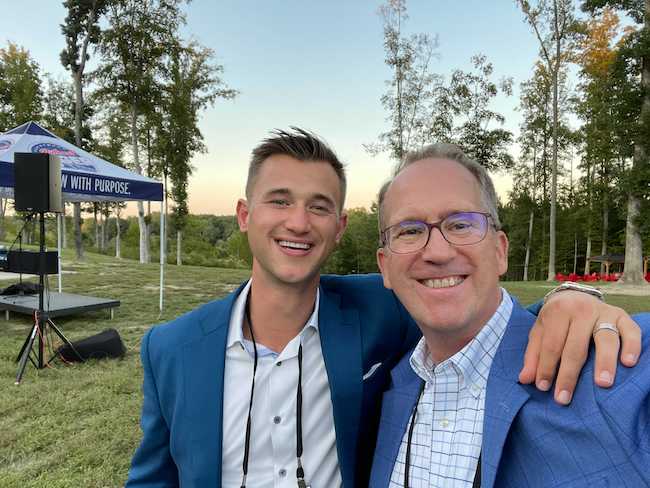
(Pictured Left to Right: Glenn Diersen Jr of Summit Human Capital and Scot McRoberts of VACEOs at RVA 25 event)
The VA Council of CEOs (VACEOs) community is made up of leaders from some of the fastest-growing businesses in Richmond, Virginia. In fact, 36% of “The RVA 25: Richmond’s fastest-growing companies for 2021” are members of VACEOs.
Topping the list? VACEOs Member Glenn Diersen Jr of Summit Human Capital with an astonishing growth rate of 2,489%.
To these ALL these leaders, we say congratulations, and well done!
VACEOs Members Making RVA 25 (2021)
| Rank | Member | Company | Growth | Industry |
| 1 | Glenn Diersen Jr | Summit Human Capital | 2,489% | Information Technology Services & Solutions |
| 3 | Jock Wheeler | Old Dominion Mechanical | 144% | HVAC, Plumbing and Electrical |
| 7 | Chuck McBride | Forsyte IT Solutions | 66% | Technology Consulting |
| 11 | Justin Etheredge | Simple Thread | 39% | Software Consulting |
| 13 | Tracee Mathes | Swig Life | 33% | Premium Insulated Drinkware and Coolers |
| 14 | Eric Ellington | Glen Allen Grounds Management | 31% | Landscapes, Hardscape, Grounds Maintenance |
| 15 | Sonny Gupta | Daybreak IT Solutions | 31% | IT Recruitment, Consulting, & Training |
| 16 | Eddie O’Leary | Colab Multimedia | 30% | Website Development |
| 24 | David Fratkin | Dominion Payroll Services | 14% | Payroll Services and Product Solutions |
4 Reasons Why SMB CEOs in Roanoke Region Should be Optimistic

The business climate west of the Blue Ridge is showing a resurgence. Here are the top 4 reasons why CEOs of small and mid-sized businesses in the area should be optimistic. (I’ve shamelessly saved the BEST reason for the last.)
#1) Roanoke Is Reawakened
Roanoke, Virginia’s regional revitalization strategies have gained traction, according to VA Business. The collaborative efforts of the Roanoke Regional Partnership, Visit Virginia’s Blue Ridge, and the economic development efforts of Roanoke City, Roanoke County, Botetourt County, Franklin County, and the City of Salem are gaining momentum.
“Thanks to forward-thinking investments in infrastructure, strategic planning for revitalization and a marketing approach that touts the area’s outdoor amenities, the Roanoke Valley is seeing sizeable investments made by companies with existing operations as well as many from outside the region,” says John Hull, Executive Director of the Roanoke Regional Partnership.
#2) Reverse Brain Drain is in Effect
Roanoke and New River Valley natives who left the area for educational and job opportunities in the life sciences are coming back. These “Boomerangs” are lured by family ties, livability, the natural scenic beauty of the area, and employment at leading science and medical facilities, including the:
- Virginia Tech Carilion School of Medicine (located in downtown Roanoke)
- Vistar Eye Center
- Fralin Biomedical Research Institute
- Radford University Carilion (teaching hospital for the medical professions located in downtown Roanoke)
- Virginia Tech Animal Cancer Care and Research Center (adjacent to the Virginia Tech Carilion School of Medicine)
Why is this great news? Experienced talent is headed your way.
#3) Roanoke Is Getting Noticeable National Attention
Speaking of talent pool. Did you know that the Roanoke region was named to the “LinkedIn Top 20 Remote-Work Haven List”? The Roanoke Region’s infrastructure, culture, and required support system (like co-working spaces) make it ideal for remote workers to thrive.
It’s also a great place to retire. Kiplinger named Roanoke number 1 of 7 “Best Places to Retire” Key factors noted for the selection included outdoor amenities, proximity to the Blue Ridge Parkway and the Appalachian Trail, art and cultural attractions, livability, thriving downtown with a great food scene, cost of living, diverse population, educational opportunities, and health care (five hospitals within 25 miles).
The same amenities that attract retirees (and remote workers) also attract outside talent who relocate to start, buy, or work for businesses.
#4) VA Council of CEOs Now Forming Second Peer Roundtable in Roanoke
VACEOs is a nonprofit organization that’s been in the business of connecting CEOs for learning and growth for more than 20 years. At the heart of it, we bring CEOs of small and mid-sized businesses together in peer roundtables.
Simply said, a VACEOs roundtable isn’t about networking (although you’ll make important connections) and it’s not about getting advice (although you’ll learn and grow). These groups are about sharing experiences to help you avoid the mistakes others have made, broaden your perspective and realize new options and opportunities.
Groups like these help CEOs make better business decisions, improve the CEO’s ability to manage business-related stress, and more. (Read research.)
Are you, or do you know, a SMB CEO, president, or business owner in need of our kind of support? Contact me today. We have roundtables forming in the Roanoke and New River Valleys now.
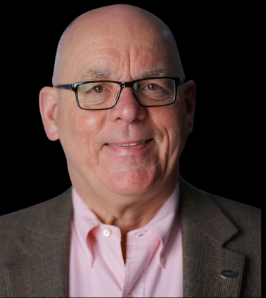
About the Author
Keith Hartman, Regional Executive for Virginia Council of CEOs (VACEOs), has over five years of experience developing and supporting peer-to-peer roundtables and forums for Vistage Worldwide, the international leader in peer advisory groups and personal leadership development for CEOs and senior leaders. He has experienced first-hand the transformational impact that the sharing of challenges, opportunities, and experiences with trusted peers in a confidential environment can have, and is looking forward to helping the Council expand this concept to all corners of the Commonwealth. Learn more about Keith.
12 Lessons I’ve Learned by Mike Muldowney, CFO Consultant

Since recently joining Warren Whitney, I’ve been reflecting on the lessons I’ve learned along the way in my 30 years since college working in various finance capacities. These insights have been gained from my starting point at a large Fortune 500 firm and then honed over the rest of my career. I had the adventure of joining a start-up that grew over 16 years and then ultimately sold the business! And since 2014, I’ve been helping businesses and nonprofit organizations grow and improve as a fractional CFO/Controller and consultant.
Here are some of the most important things I’ve seen and learned along the way:
- As I learned early on, if you can, you should “own the dirt.” If you can do it, be your landlord. It provides more control as well as a way to build equity.
- Monthly financial statements are important. Whether you are just starting your business or have grown to be a large company, monthly financial statements are essential as a road map for your firm. These statements, typically the income statement and balance sheet, provide information about an organization’s operations, financial position, and cash flow.
- Even more importantly, understand your company’s “mathematics to profitability” – the drivers of your organization — KPI’s (key performance indicators), metrics, and dashboards.
- Pay attention to the balance sheet and not just the income statement. The income statement will help managers see and understand areas where costs are rising, sales are slumping, or headcount is out of line. The balance sheet shows how much the company owns (assets) and how much it owes (liabilities).
- Keep good records – financial, inventory, costing, HR, etc. Have processes that are consistent and documented. This will benefit you as you manage your business and when you may ultimately transfer or sell it.
- If your business is growing quickly, sufficient funding for working capital is essential to achieve growth projections. One great tool to access working capital is applying for a line of credit (LOC) from your local bank. The funds made available by a LOC can support growth by making additional capital available as needed and upon request. And as the business grows and generates additional profits, it should pay back the amount borrowed from the line of credit.
- Banks lend money to people that they believe will pay them back – borrower character is important. So are good financial documents, forecasts, and the possibilities of the business. Cash flow management and reporting is often overlooked. If you invest in building that tool, it will not only help you to manage everything in your business better, but it will also impress your banker and increase your funding options.
- Keep a close eye on overhead expenses as you manage your business. Almost everything you do can either be done better or at a lower cost. Track your margins by division, product/service, location, etc.
- Without sales, you’ve got nothing. That said, without production, shipping, finance, QC, HR, etc… you can’t deliver the final product. The point is – I think the best companies lean towards being sales-oriented – without forgetting the importance of operations, finance, and technology.
- If you don’t already have one, consider forming an advisory board of individuals or find a group of peer within an organization like VA COUNCIL OF CEOs — a group who is interested in you and your business, who can offer ideas, suggestions, and options as you guide your business through easier and challenging times. Surround yourself with good advisors and peers you can turn to.
- Invest in the employees who “make the money” for the company. It sounds cliché, but in most businesses, your employees are what separates you from the pack. Good people, good processes, and care for your customer are critical.
- Owners and/or senior managers set the tone for the way the company conducts business. Employees will take their cues from the behaviors they see. Be deliberate about shaping your culture. Culture trumps strategy.
About the Author
Mike Muldowney joined Warren Whitney as a Finance & Accounting Director. He brings more than 30 years of experience in accounting, finance, interim management, and executive leadership. He has hands-on expertise with mergers and acquisitions through the purchase, growth, and sale of his own company. To learn how Mike or our other consultants can support your business, contact Stephanie Ford at sford@warrenwhitney.com or 804.282.9566
Editors Note: Content and imagery provided by Warren Whitney. Warren Whitney is a Sponsor of Virginia Council of CEOs.


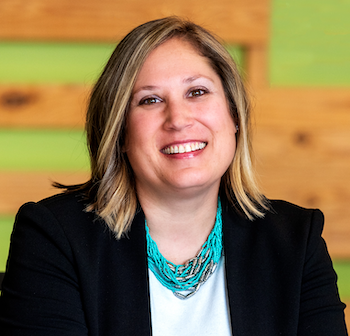
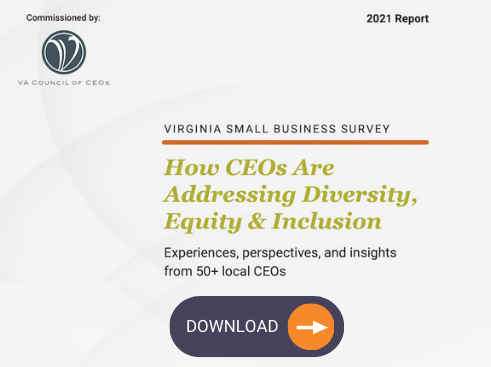

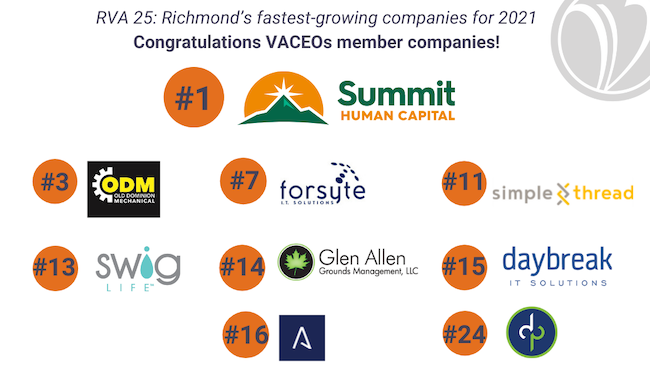
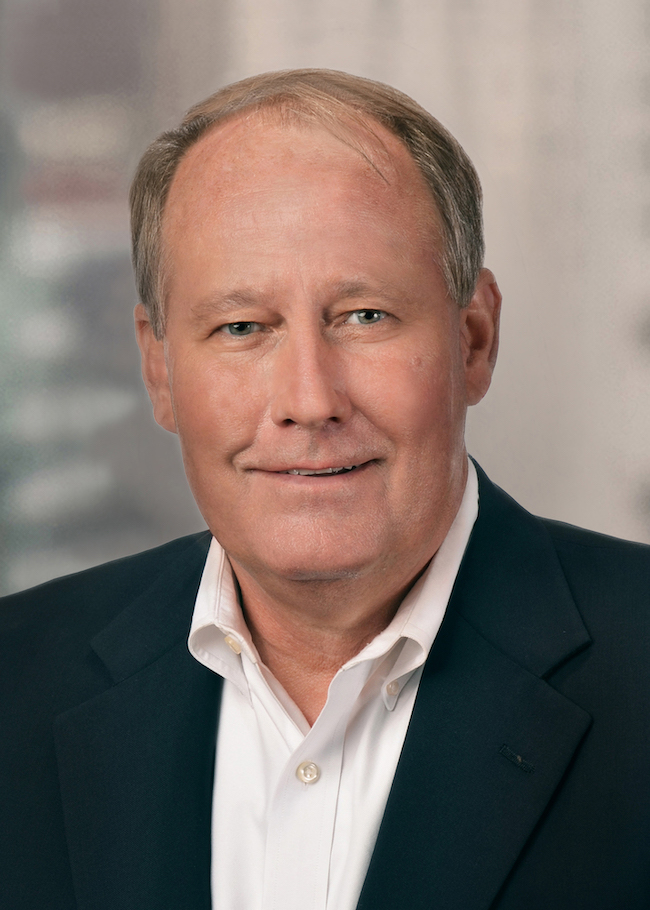
Recent Comments